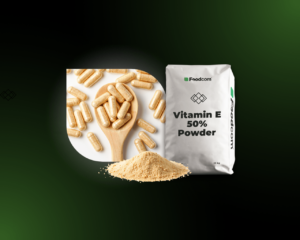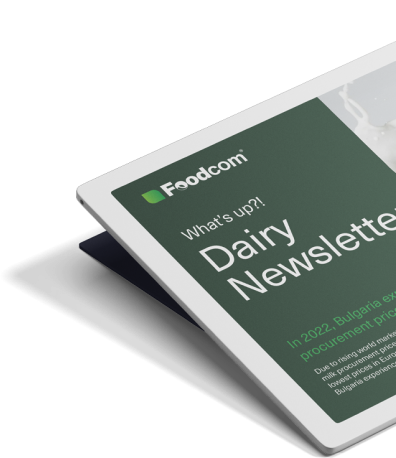- Fluctuations in raw material prices – N-butanol is getting more expensive due to limited supply, and N-heptane is getting cheaper through overproduction.
- Dynamic changes in the chemicals market – demand, raw material prices and global investments are affecting the sector.
- Vitamins and supplements market growth – growing health consciousness is driving demand for vitamin C, E and beta-alanine.
- Investment and innovation – Sinopec is building a refinery in Sri Lanka, and AI is optimizing chemical distribution.
The industrial chemicals and raw materials market is experiencing dynamic changes, driven by increasing demand, price fluctuations and global investments. The vitamin sector, including ascorbate and vitamin E, is gaining ground due to growing health awareness, while prices of some raw materials, such as N-butanol, are rising due to limited supply and N-heptane is cheapening due to overproduction. In the investment sector, a key development is Sinopec’s planned US$3.7 billion refinery in Sri Lanka, highlighting a strategic shift in the region’s energy sector. At the same time, developments in artificial intelligence are changing the chemical distribution landscape, optimising logistics processes and supply chain management.
Ascorbic acid (vitamin C)
The ascorbic acid market continues to grow rapidly, driven by high demand in the food, pharmaceutical and feed industries. The global ascorbic acid market is expected to reach US$2.4 billion by 2030, growing at an annual rate of 4.6%. In the food industry, vitamin C is becoming increasingly popular as a natural preservative and antioxidant, especially in Europe where there is a growing demand for clean label products. In addition, the pharmaceutical industry remains a major consumer of ascorbic acid, and growing health awareness post COVID-19 continues to drive strong demand for immune-boosting supplements. The market is dominated by the Asia-Pacific region, particularly China, which is the production leader, with growing demand for fortified food and animal feed.
Choline chloride 60%
In industrial applications, the demand for choline chloride 60% has seen steady growth, particularly in the areas of feed production, the chemical industry and the production of oil and lubricant additives. The compound is used as a modifier to improve chemical properties, supporting production processes in various sectors. The growing demand is driven by the need to optimise industrial efficiency, cost-effectiveness and sustainability. Choline chloride is increasingly being incorporated into advanced feed formulations and chemical production processes.
Vitamin E
The industrial vitamin E market is experiencing continued growth, driven by increased demand in sectors such as animal feed, food processing and industrial production. Valued at around US$2.99bn, it is growing at a rate of 7.7% per year. It is widely used in food and feed as an antioxidant, as well as in the production of plastics, rubber and cosmetics. Recent supply disruptions caused by a fire at BASF’s 2024 production plant have temporarily affected vitamin E production, leading to price volatility and shortages. However, production is expected to stabilise by mid-2025, which is likely to alleviate these issues.
Beta-alanine
The beta-alanine market continues to grow, driven by its increasing use in sports supplements, functional foods and beverages. Valued at approximately $96.3 million in 2024, it is expected to grow at a compound annual growth rate (CAGR) of 4.3% through 2034. This growth is primarily driven by increasing consumer awareness of health and fitness, along with a surge in popularity of performance-enhancing supplements. In the industrial sector, beta-alanine is increasingly being incorporated into food and beverage formulations, particularly in energy drinks and health supplements aimed at improving athletic performance. In addition, the growing trend of active lifestyles and increasing demand for functional foods are expected to continue to drive the market.
News
Sri Lanka has signed a US$3.7 billion agreement with China’s Sinopec to build an oil refinery in Hambantota. The project is important for the energy independence of the country, which is currently entirely dependent on fuel imports. The Sri Lankan government stresses that the investment will accelerate the development of the Hambantota port, which has not yet reached full operation. The new infrastructure is expected to attract more investors, increase maritime traffic and strengthen the country’s position as a logistics hub in the region.
The refinery will not only meet local energy needs, but will also reduce fuel costs and improve the country’s energy security. The parties to the agreement will jointly decide on the allocation of production, although details of the refinery’s capacity have not yet been disclosed. The project is part of Sri Lanka’s wider cooperation with China, which has gained momentum following President Anura Kumara Dissanayake’s visit to Beijing. The deal is part of China’s geopolitical strategy in the Indian Ocean region, which is also important from an international security perspective.
N-heptane prices in the Asia-Pacific (APAC) region are falling in January 2025, mainly due to weak demand in key industries such as adhesives, paints and coatings. Although commodity prices such as paraffin are stable, overproduction and weaker orders ahead of China’s Lunar New Year celebrations have become an issue. During this period, many companies are halting production or reducing raw material purchases, affecting lower demand.
As a result, demand for N-Heptan in China and South Korea remains low, and large inventories in the adhesives and paints industry make it difficult to match supply with demand. The upcoming holidays have further slowed the market, with many companies cutting back on purchases, holding back on larger orders. In addition, economic problems in South Korea, such as a decline in industrial production and poor weather conditions, have also reduced demand. With excess inventories and low demand, N-heptane prices could fall further in the coming weeks.
At the end of January 2025, N-butanol prices in Germany increased, mainly due to higher raw material costs and reduced production. Despite the availability of other oxygenated alcohols, there were supply difficulties for N-butanol and isobutanol, resulting in higher prices. Raw material availability problems are expected to continue in the near term as production constraints continue and stocks are insufficient.
The increase in N-butanol prices is also due to rising raw material costs, resulting in higher end-product prices. Although the availability of other chemicals, such as 2-EH, remains stable, companies are concerned about further increases in spending, which could impact the market in the coming weeks. As a result, N-butanol prices may remain under pressure and supply will remain tight.
The outdoor chemical distribution market is expected to grow at a CAGR of USD 156.7 million through 2029, driven by increasing demand for efficient solutions in the industry. A report by analyst firm Technavio indicates that one of the main drivers of this growth is the growing interest in using artificial intelligence (AI) to optimise supply chain and inventory management in the chemical industry.
AI technologies are gaining prominence as they help distribution companies improve operational efficiency, anticipate customer needs and automate processes. As a result, AI has the potential to redefine the market, changing the way chemicals are produced, stored and distributed, and helping the industry as a whole to continue to grow.
![What’s new in the chemical industry? Market overview and analysis [January 2025] What’s new in the chemical industry? Market overview and analysis [January 2025]](https://foodcom.pl/wp-content/uploads/2025/01/Biuletyn-na-bloga-1520x760.png)


![Co słychać? Wiadomości z branży paszowej! [Grudzień 2024] Co słychać? Wiadomości z branży paszowej! [Grudzień 2024]](https://foodcom.pl/wp-content/uploads/2024/12/feed-na-bloga-300x150.png)
![Co nowego w branży chemicznej? Przegląd i analiza [Listopad 2024] Co nowego w branży chemicznej? Przegląd i analiza [Listopad 2024]](https://foodcom.pl/wp-content/uploads/2024/11/biuletyn-industrialny-300x150.png)
![Co słychać? Wiadomości z branży paszowej od Foodcom S.A. [Październik 2024] Co słychać? Wiadomości z branży paszowej od Foodcom S.A. [Październik 2024]](https://foodcom.pl/wp-content/uploads/2024/10/feed-biuletyn-300x150.png)

